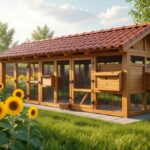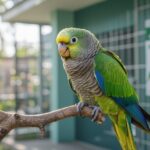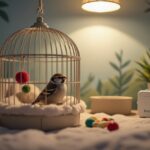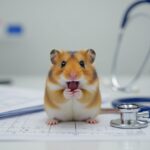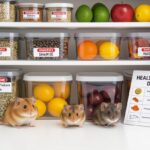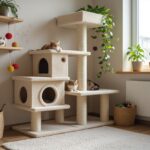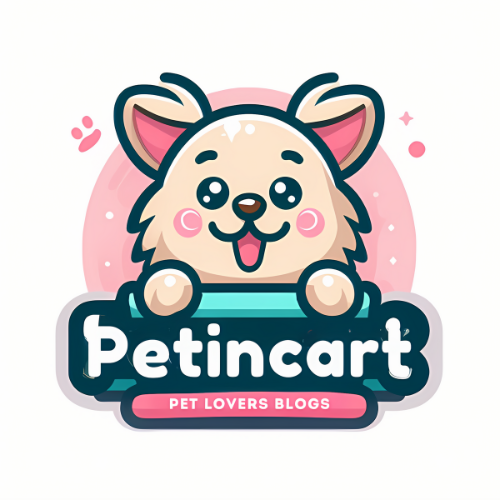This guide will help you ensure a safe and healthy environment for your feathered friends. You will learn how to identify and eliminate common hazards in your home that can threaten the well-being of your birds. From toxic plants to harmful household items, understanding these dangers is key to protecting your pets. Additionally, you will discover how to create a stimulating and enriching habitat that caters to their natural behaviors. By following these tips, you can foster a thriving living space for your birds.


Understanding Bird Safety
While you may not think much about the potential dangers around your home, creating a safe living environment for your feathered friends is crucial. Birds are highly sensitive creatures, and their well-being depends on the safety measures you implement in your home. A bird-safe environment not only protects your pets but also encourages them to thrive and express their natural behaviors.
Importance of a Bird-Safe Environment
If you are a bird owner, you must recognize the importance of a bird-safe environment. Without proper precautions, your home can become filled with hidden hazards that could jeopardize your bird’s health and safety. Birds are naturally curious, often engaging with their surroundings, which means that even items you consider harmless can pose risks. For instance, toxic plants, small objects that can be swallowed, or even open windows can lead to severe injuries or fatalities.
Moreover, understanding that a bird-safe environment enhances their quality of life is crucial. When you eliminate hazards, you provide a secure space for your pets to explore and exercise. This encourages mental stimulation and physical activity, which are critical for their happiness and longevity. Implementing safety measures ensures that your birds feel secure and free to express their natural instincts.
Common Hazards for Birds
Environment plays a significant role in ensuring your bird’s safety. Common hazards include toxic substances, open windows, ceiling fans, and certain household items that can be harmful. Many of these threats may not be immediately obvious, and it’s your responsibility to identify and mitigate them. For example, common household cleaners, certain food items, and even smoke from cooking can pose serious risks for birds. Placing dangerous materials out of reach or opting for bird-safe alternatives is a wise precaution.
BirdSafe guidelines recommend a thorough assessment of your home environment to mitigate risks. Look for small objects that can be easily swallowed, as well as any toxic plants commonly found indoors, such as philodendrons or azaleas. Additionally, consider the placement of perch toys to avoid any proximity to open flames or unattended heating appliances. By taking the time to evaluate your living space and removing potential hazards, you demonstrate a commitment to your bird’s safety and well-being.

Tips for Creating a Safe Indoor Space
Clearly, creating a bird-safe indoor environment is crucial for the well-being of your feathered friends. For enhanced safety, consider the following tips:
- Choose non-toxic materials for your furnishings and decorations.
- Secure windows and balconies to prevent escapes or injuries.
- Eliminate toxic plants that may pose risks to your birds.
- Keep cords and wires tucked away and secured to avoid accidents.
- Provide sufficient climbing and playing spaces for your birds.
Perceiving the world through your bird’s eyes can help you identify risks and enhance their safety at home.
Choosing Safe Furniture and Decorations
Creating a bird-safe space requires deliberate choices concerning your furniture and decorations. Opt for items made from natural, non-toxic materials, as some synthetic materials can release harmful chemicals. Avoid furniture that has been treated with pesticides or flame retardants, as these can be hazardous to your birds. Moreover, selecting decorations free from small, loose parts minimizes the chance of ingestion or choking hazards.
In addition, ensure that your furniture is stable and secure, preventing any tipping or toppling that could cause harm to your birds. Be mindful of using fabrics for upholstery that are easy to clean and won’t trap feathers or droppings, helping to maintain a healthy and hygienic environment for your pets.
Securing Windows and Balconies
On the other hand, securing your windows and balconies is an imperative part of creating a safe indoor habitat for your birds. Install screens, bars, or netting to prevent them from slipping outside when they fly or perch near open areas. Consider using window locks and keeping windows shut when your birds are out of their cages to avoid any escape attempts or accidental falls.
Understanding the potential dangers your birds face when near open windows is crucial in ensuring their safety. Even a minor slip can lead to serious injuries or, in the worst-case scenario, death. Therefore, take the time to manage any access your feathered companions have to open areas to keep them safe and secure.
Eliminating Toxic Plants
With a diverse range of indoor plants available, it’s important to be aware of which ones may be toxic to birds. Certain common houseplants, such as pothos, philodendron, and oleander, can pose serious health risks if ingested. Educate yourself on the plants that are safe for your avian friends, and remove any that could present a danger.
Plus, to create the safest environment, consider replacing toxic plants with bird-friendly alternatives like spider plants, bamboo, or certain herbs. These options not only provide aesthetics but also contribute positively to their well-being. Prioritize understanding the plants you introduce into your home, as even a single leaf can have toxic effects on birds if they nibble on it.
Outdoor Safety Factors
Not creating a safe and welcoming outdoor environment for birds can expose them to numerous dangers. Whether it’s your backyard, a community garden, or a park, ensuring a bird-safe space involves understanding the various outdoor safety factors that can affect their well-being. Below are key aspects to consider:
- Provide natural cover and shelter.
- Use bird-friendly plants.
- Avoid the use of harmful chemicals.
- Monitor for predatory animals.
- Provide safe feeding stations.
Creating a Safe Garden Habitat
Creating a safe garden habitat is important for supporting local bird populations. One of the easiest ways to attract birds to your garden is by incorporating native plants that provide food and shelter. By growing diverse flora, you can create a natural ecosystem where birds can thrive. Keep in mind that adding trees, shrubs, and flowers that produce seeds or berries offers sustenance, while dense vegetation can provide crucial protection from harsh weather and predators.
Additionally, you should ensure that your garden is free from harmful chemicals and pesticides. These substances can not only harm birds directly but can also contaminate their food sources. Utilize organic gardening methods and natural pest control solutions whenever possible. This approach not only creates a safer habitat for birds but also promotes a healthier environment for all wildlife.
Protecting from Predators
Assuming that your garden is a sanctuary for birds means considering strategies to protect them from predators. You might be unaware that common backyard predators, such as cats and hawks, can pose a serious threat. To mitigate these risks, consider placing feeding stations in areas where birds can easily escape, such as near dense shrubs or trees that provide cover. Furthermore, using bird feeders that are designed to minimize access for larger birds can help ensure the safety of your garden’s smaller residents.
Protecting your birds also involves creating physical barriers that can deter predators. Installing birdhouses with proper entry hole sizes can keep out larger animals while providing safe nesting options. Additionally, consider setting up visual barriers, such as tall grasses or decorative fences, to dissuade predators from entering specific areas of your garden where birds gather. These measures will not only give the birds a greater chance of survival but will also enhance your garden’s aesthetic appeal.
Ensuring Clean Water Sources
Habitats need accessible and clean water sources to support their avian inhabitants. Ensuring that you provide these resources means regularly cleaning bird baths to prevent algae growth and disease. Stagnant or dirty water can attract harmful bacteria, leading to dangerous health implications for birds. You should aim to change the water frequently and maintain a shallow depth to accommodate both large and small bird species effectively.
It is also crucial to design water features that are safe and inviting. Consider installing water sources with features like pebble bottoms or floating solar-powered fountains that will keep the water circulating. This not only prevents stagnation but also attracts birds with the gentle sound of running water—providing them with a naturally appealing sanctuary. Recognizing these elements will contribute significantly to creating an environment where birds can thrive.
Ongoing Maintenance and Monitoring
After creating a bird-safe living environment, it’s imperative to implement ongoing maintenance and monitoring to ensure the continued safety and health of your feathered friends. Regular check-ins and updates to their habitat can help you identify potential hazards before they become serious risks. By committing to a routine that includes safety audits and health assessments, you can provide a secure and thriving environment for your birds.
Regular Safety Audits
Ongoing safety audits allow you to regularly assess the conditions of your living space. Begin by examining areas where your birds spend the most time, such as cages, perches, and play areas. Look for any signs of wear or damage, such as broken toys, frayed ropes, or exposed cage wires that could cause injury. Additionally, inspect for any potential hazards in the environment, including open windows, toxic plants, or chemicals left out in the open that might affect your birds’ well-being.
Once you’ve identified any issues, make the necessary updates or repairs promptly. Implementing a schedule for these audits—perhaps on a weekly or monthly basis—will help you stay vigilant and maintain a safe sanctuary for your birds, ensuring that they remain free from harm.
Health Check-Ups for Birds
You should prioritize regular health check-ups for your birds to monitor their overall well-being. Routine veterinary visits can help catch any underlying issues before they escalate. During these appointments, a vet will assess your birds’ plumage, weight, and general behavior to identify any signs of illness or distress. Do not forget, any sudden changes in your birds’ appetite or behavior can be indicators of health problems, so it’s crucial to stay observant.
A vital component of your birds’ wellness is their diet and nutrition. Providing a balanced diet, rich in fresh fruits, vegetables, and quality pellets, can bolster their immune systems and contribute significantly to their overall health. Ensuring your birds receive regular check-ups and attentive care can lead to long, healthy lives filled with chirps and chatter in a safe environment.
Summing up
As a reminder, creating a bird-safe living environment requires careful consideration and proactive measures on your part. Start by evaluating your surroundings, ensuring that windows, balconies, and outdoor spaces are secured with bird-safe materials. Customizable solutions such as screens, decals, or reflective films can significantly reduce collision risks. Additionally, be mindful of outdoor pets and the presence of natural predators, and consider creating safe indoor spaces with appropriate plants and clean air for your feathered visitors or residents.
By actively implementing these strategies, you not only protect avian lives but also contribute to the broader environmental health of your community. Remember that your actions, no matter how small, can make a significant difference in fostering a safe habitat for birds. Stay informed, remain vigilant, and continue to educate others about the importance of preserving these beautiful creatures within our ecosystems, ensuring that your home is a sanctuary for birds now and in the future.
FAQ
Q: What are the vital elements to consider when creating a bird-safe living environment?
A: When creating a bird-safe living environment, there are several crucial elements to consider. First, ensure that all windows and balcony doors are fitted with sturdy screens to prevent birds from flying into glass. Second, remove or secure any plants that may be toxic to birds, such as certain varieties of lilies or ivy. Third, be mindful of potential hazards such as open fans, heating elements, or small objects that could pose a choking risk. Lastly, a bird-friendly space should include safe perches, toys, and places for your pet to feel secure and comfortable.
Q: How can I identify and remove toxic plants from my living space?
A: Identifying toxic plants is straightforward with some research. Start by compiling a list of houseplants commonly known to be toxic to birds, such as philodendrons, pothos, and sago palms. Once you have your list, inspect your living space for these plants and consider removing or relocating them to a space that is inaccessible to your bird. Additionally, you can consult with a local veterinarian or avian specialist for recommendations on safe plants that can embellish your home without posing a danger to your feathered friends.
Q: What steps can I take to minimize noise and movement to reduce stress for my birds?
A: To create a stress-free environment for your birds, consider implementing these steps. Start by placing their cages in quieter areas of your home, away from heavy foot traffic and loud appliances. You can also reduce noise by using curtains or soundproof panels to diminish outside sounds. Furthermore, limit sudden movements and energetic play in their vicinity; instead, engage gently with your birds by using calm tones during interactions. Lastly, providing a predictable daily routine can help your birds feel more secure in their environment.




